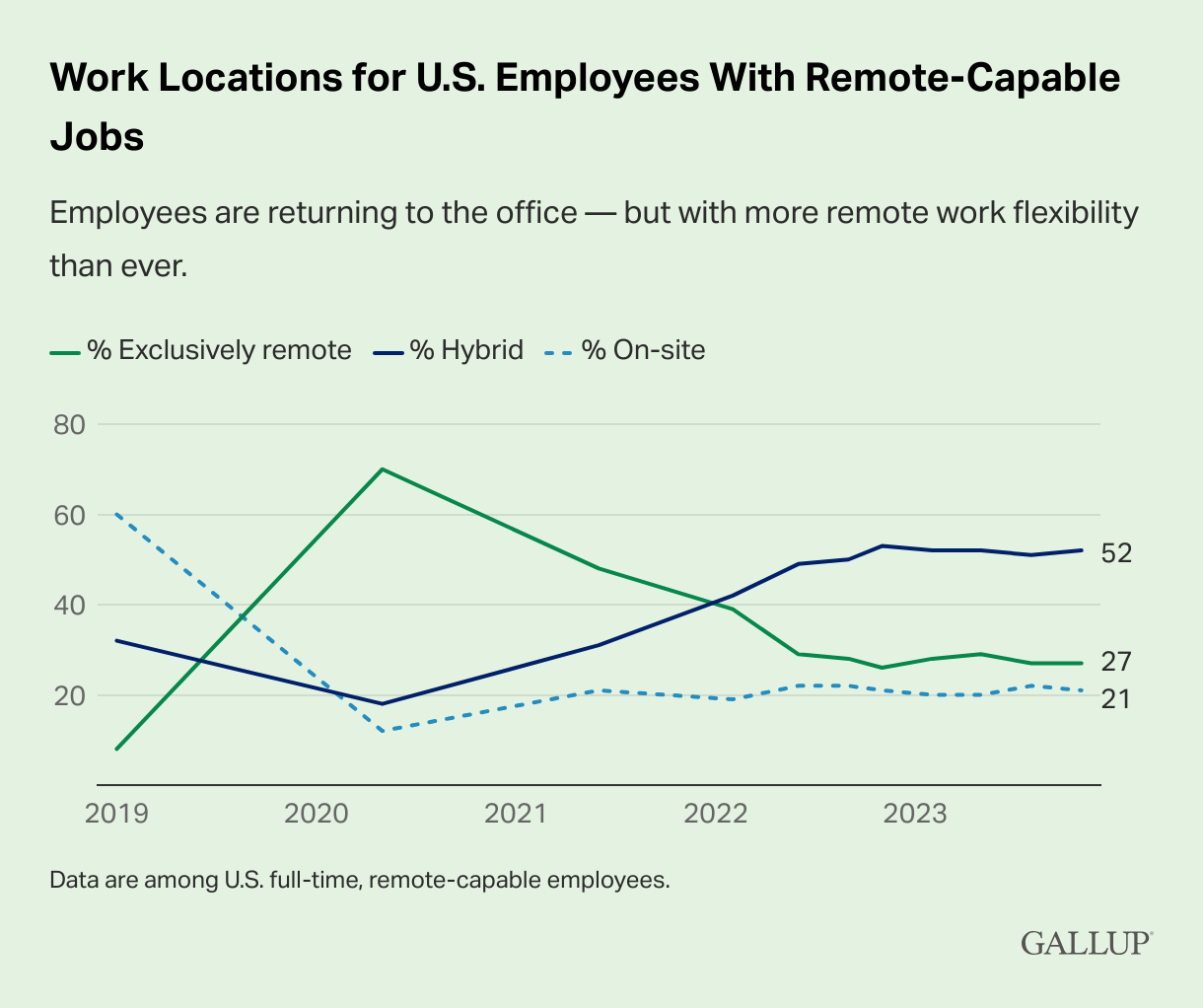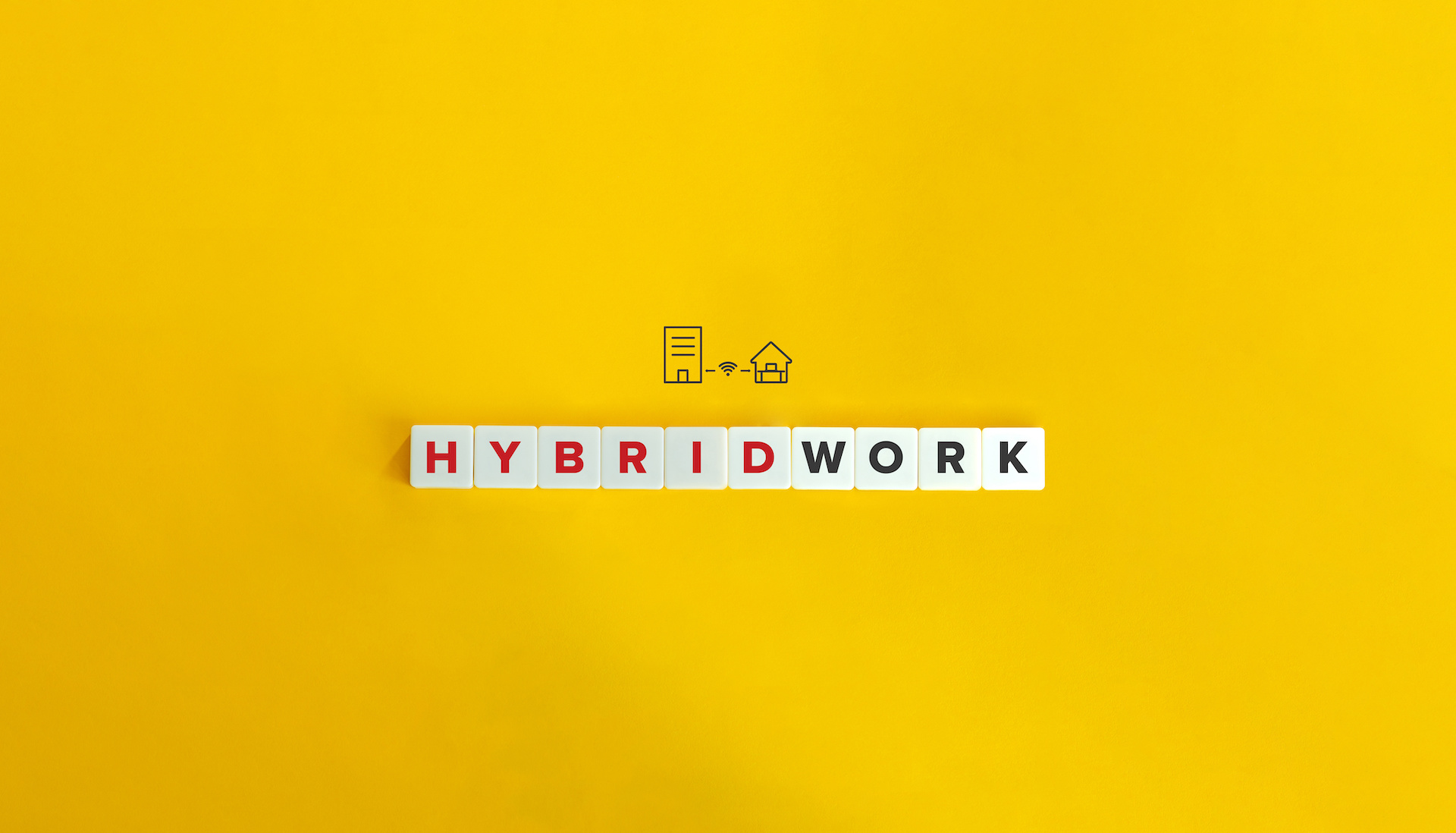Despite well-publicized return-to-office mandates, remote work still accounts for 27% of the American workforce, with 66% working in a hybrid model. A recent study found that CEOs are finally accepting that a return to the old ways of working is futile. And with almost 20% of office space vacant, the highest level since 1979, it’s clear that hybrid working is a paradigm shift rather than a short-term fad.

However, for companies to benefit, they must audit and update their operations to help employees thrive. As opposed to trying to force fit what worked before. This requires overhauling strategies to keep employees engaged, focused, and productive. Below are three areas where organizations, from startups to global enterprises, can focus their efforts to decode the dynamics of hybrid work.
Collaboration
Using the right tools that ensure workers are connected and productive is the foundation for a successful distributed workforce. Rather than relying on Big Brother technology to monitor, organizations should integrate solutions that help make the lives of employees easier. Adopting this mantra when selecting software and apps will ensure they aid remote work and foster connections between individuals.
It’s also important not to overwhelm them with too many solutions. With research uncovering that 69% of remote workers report burnout from digital tools, a “less-is-more” approach is essential to aid productivity. Therefore, streamline and cull anything that fails to be adopted. For businesses with a distributed workforce in multiple time zones, technology must support asynchronous collaboration. This allows employees to contribute from any location at any time. Providing flexibility can help distributed employees feel more autonomous and engaged, which in turn drives productivity.
Communication
Employees can quickly become disengaged in remote working environments, leading to trust breaking down. And with a hybrid workforce, relying on informal communication channels is no longer viable. Additionally, the corporate meeting-driven culture is not effective, with workers in the US spending 31 hours per month in unproductive meetings.
Organizations must implement a simple but effective communications structure with solutions that promote engagement and build connections between employees and teams. Tactics like daily standups and project management solutions can keep work and people on track.

Meetings should be used judiciously for brainstorming and problem-solving and have a clear end goal so everyone understands the purpose. In addition, designate some days as meeting free to allow time to focus. Some companies have taken this a step further and implemented a no-meeting culture to help boost productivity and innovation, but this requires tools that support the company in other ways.
Managers can also foster open communication by scheduling set times where employees can chat and ask questions. This provides a way for employees to connect but reduces the need for additional meetings, allowing everyone to be productive.
Cybersecurity
Working from home introduces new security concerns spanning poorly secured Wi-Fi to personal devices passing along malware to data privacy issues, all of which increase the likelihood of a data breach occurring.
A distributed workforce requires organizations to establish robust protocols and adopt a zero-trust mindset to address the expanded attack surface. An important element of this is continuously validating and verifying every user accessing the network to mitigate the risk of an unauthorized entry occurring.
Another critical component is ongoing training for employees to keep them up to speed on the latest cyber threats, phishing scams and ransomware tactics. Additionally, regular education on cybersecurity best practices, like ensuring your home network is secure and providing employees with a VPN, are vital.
The Future of Work
Hybrid work presents an opportunity for organizations to rethink how they operate. By focusing on the areas outlined, companies can overcome the limitations of remote environments and create a dynamic culture where employees are engaged, happy, and productive.
Rick Morrison is the CEO and founder of CoordinateHQ, which grew out of his passion for helping leaders run their businesses better. Before CoordinateHQ, he founded and ran Comprehend Systems for a decade until its acquisition by Saama in 2019. In addition to being an entrepreneur, he spent several years as a startup investor and advisor at Y Combinator and Initialized Capital.
© YFS Magazine. All Rights Reserved. Copying prohibited. All material is protected by U.S. and international copyright laws. Unauthorized reproduction or distribution of this material is prohibited. Sharing of this material under Attribution-NonCommercial-NoDerivatives 4.0 International terms, listed here, is permitted.








